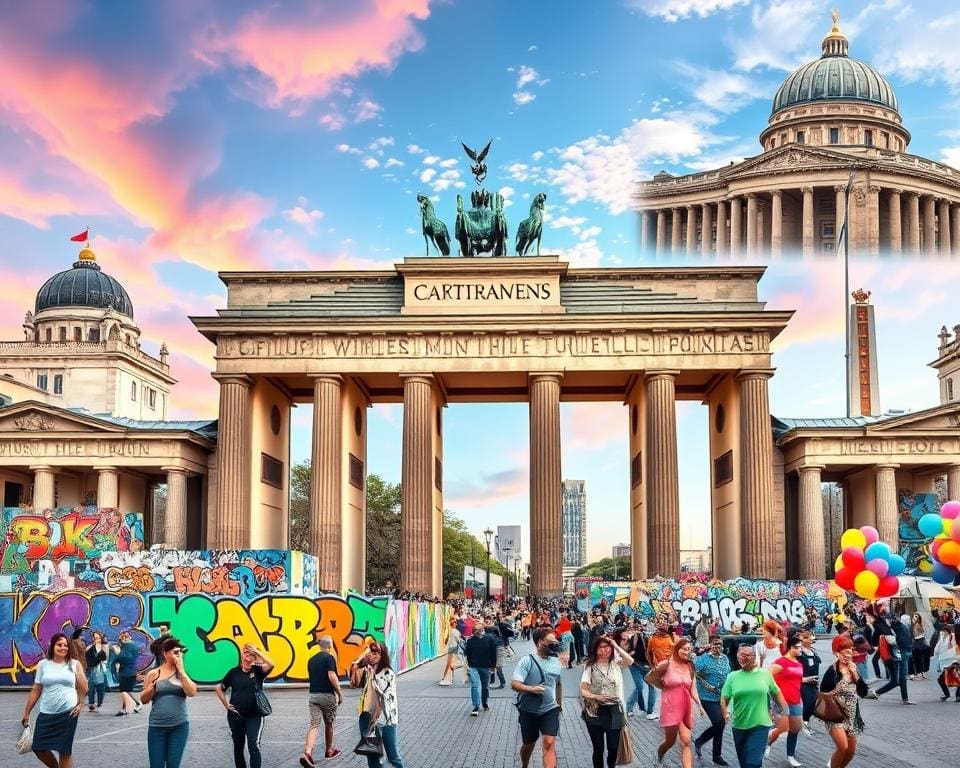Berlin, the vibrant capital of Germany, is a city steeped in rich history and dynamic culture. Its landmarks, such as the iconic Brandenburg Gate and the remnants of the Berlin Wall, stand as lasting symbols of its complex past, marking the city’s journey from a Prussian capital to a divided metropolis. In recent years, Berlin has emerged as a thriving hub for modern art and innovative artistic expression, boasting a unique blend of traditional and contemporary influences.
This article invites you to explore the multifaceted essence of Berlin, delving into how its history shapes its cultural narrative and modern artistic endeavours. Join us as we uncover the layers of Berlin’s identity and its role as a cultural melting pot in Europe.
The Rich History of Berlin
Berlin’s evolution is a vivid tapestry woven through significant periods that have shaped the very essence of the city. From its strong beginnings as the Prussian capital, the city has witnessed a multitude of transformations influenced by historical events that mark its journey through time.
From Prussian Capital to Divided City
Founded in the 13th century, Berlin emerged as a pivotal centre of power in Germany, particularly under the reign of Frederick the Great. This era marked a flourishing period characterised by cultural advancements and architectural marvels. As the Prussian capital, Berlin became a symbol of unity and strength, embodying the aspirations of its people.
The most dramatic transformation came after World War II, leading to Berlin’s painful division into East and West. This divided city starkly illustrated the ideological battle between communism and democracy, especially with the construction of the Berlin Wall in 1961. The wall was not merely a physical barrier but a powerful emblem of the lingering impact of war, reshaping the lives of Berliners and the perception of Germany on the global stage.
Key Historical Events Shaping Berlin
Several key historical events stand as milestones in Berlin history, signalling change and resilience. The fall of the Berlin Wall in 1989 acted as a catalyst, igniting a chain reaction that led to reunification and a renewed identity for the city. The reunification process heralded a new chapter for Berlin, fostering vibrant multicultural dynamics and a revitalisation of its cultural landscape.
Today, Berlin stands as a testament to its complex past, reflecting the historical events that have forged its identity. This rich history continues to influence the modern was of life in Germany, encapsulating the spirit of a city that rises and transforms against the backdrop of its tumultuous past.

Berlin: History, Culture, and Modern Art
Berlin’s vibrant tapestry of contemporary art exhibits how deeply intertwined the city’s historical events are with its creative expressions. The evolution of modern art within this metropole reflects a profound dialogue between past struggles and contemporary influences, shaping the artistic scene in remarkable ways.
Influence of Historical Events on Contemporary Art
The turbulent history of Berlin, marked by wars and political upheavals, has significantly influenced its contemporary art movements. Artists draw inspiration from the city’s past, infusing their work with narratives that resonate with themes of division and resilience. Renowned figures like Gerhard Richter exemplify this approach, blending personal and historical narratives within their artistic practices. The diverse array of cultural influences enriches the modern art landscape, showcasing how historical events can spark innovative and thought-provoking art.
Integration of Culture in Modern Expressions
Berlin serves as a melting pot of cultures, which fuels a dynamic environment for modern art. This cultural integration is evident in various artistic expressions, where artists seamlessly blend different mediums to create a rich aesthetic experience. The juxtaposition of historical references within contemporary works often occurs in galleries and performance spaces, revealing an ongoing conversation between the city’s diverse heritage and its modern identity. This fusion enhances the vibrancy of Berlin’s art scene, continuously reshaping its narrative and inviting audiences to engage with its multifaceted cultural landscape.
Exploring Berlin’s Cultural Landscape
The cultural landscape of Berlin is a vibrant tapestry woven from a rich history and a dynamic modernity. This metropolis thrives on a dialogue between traditional influences and contemporary culture, with institutions like the Berliner Philharmoniker standing as a testament to its classical roots. Meanwhile, the thriving street art scene and underground galleries highlight the innovative spirit that defines modern Berlin. The contrast and fusion of these elements create a unique cultural identity that captivates residents and visitors alike.
Traditional vs. Contemporary Cultural Influences
Berlin culture pulsates with a unique blend of tradition and modernity. The city’s historical landmarks, such as Museum Island, showcase traditional influences that have shaped its artistic heritage. Yet, just a few streets away, artists are redefining the scene through contemporary methods, reflecting a city that embraces change while honouring its legacy. This interplay enriches the cultural milieu, producing a thriving arts scene that is constantly evolving while remaining deeply rooted in its past.
Berlin’s Festivals and Cultural Events
Berlin’s cultural festivals are a celebration of its diversity and creativity. Events like the Berlinale Film Festival and the Fête de la Musique draw international attention, attracting artists and audiences from around the globe. These festivals not only showcase various artistic expressions but also foster a sense of community and cultural exchange that is integral to Berlin’s identity. Each event contributes to the city’s reputation as a cultural capital of Europe, highlighting the innovative spirit and rich traditions that define Berlin’s vibrant landscape.









